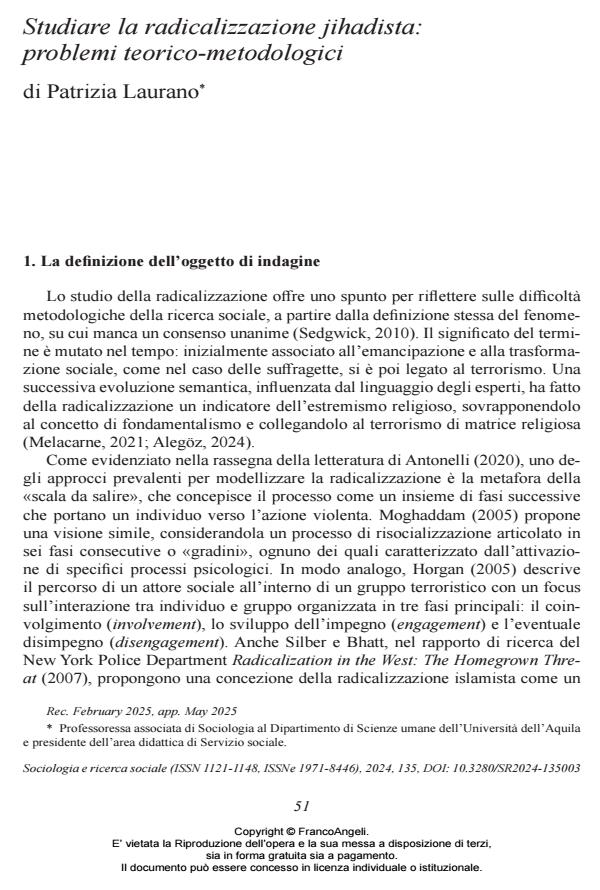Studiare la radicalizzazione jihadista: problemi teorico-metodologici
Titolo Rivista SOCIOLOGIA E RICERCA SOCIALE
Autori/Curatori Patrizia Laurano
Anno di pubblicazione 2025 Fascicolo 2024/135
Lingua Italiano Numero pagine 26 P. 51-76 Dimensione file 272 KB
DOI 10.3280/SR2024-135003
Il DOI è il codice a barre della proprietà intellettuale: per saperne di più
clicca qui
Qui sotto puoi vedere in anteprima la prima pagina di questo articolo.
Se questo articolo ti interessa, lo puoi acquistare (e scaricare in formato pdf) seguendo le facili indicazioni per acquistare il download credit. Acquista Download Credits per scaricare questo Articolo in formato PDF

FrancoAngeli è membro della Publishers International Linking Association, Inc (PILA)associazione indipendente e non profit per facilitare (attraverso i servizi tecnologici implementati da CrossRef.org) l’accesso degli studiosi ai contenuti digitali nelle pubblicazioni professionali e scientifiche
This essay explores jihadist radicalization in Europe, with a particular focus on the methodological challenges involved in field research. Although sociology has developed various explanatory theoretical models (such as relative deprivation, network theories, re-socialization, and psycho-cognitive disorders), significant limitations remain. Field research – predominantly qualitative and based on life histories and case studies – fails to adequately address fundamental questions: who becomes radicalized, and why? The essay seeks to identify the principal methodological shortcomings and propose new analytical approaches for a line of research that, beyond its theoretical relevance, may inform public policy and decision-making.
Patrizia Laurano, Studiare la radicalizzazione jihadista: problemi teorico-metodologici in "SOCIOLOGIA E RICERCA SOCIALE " 135/2024, pp 51-76, DOI: 10.3280/SR2024-135003